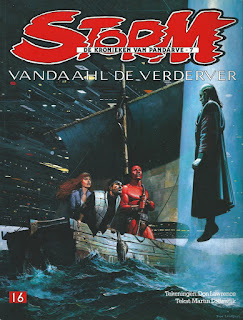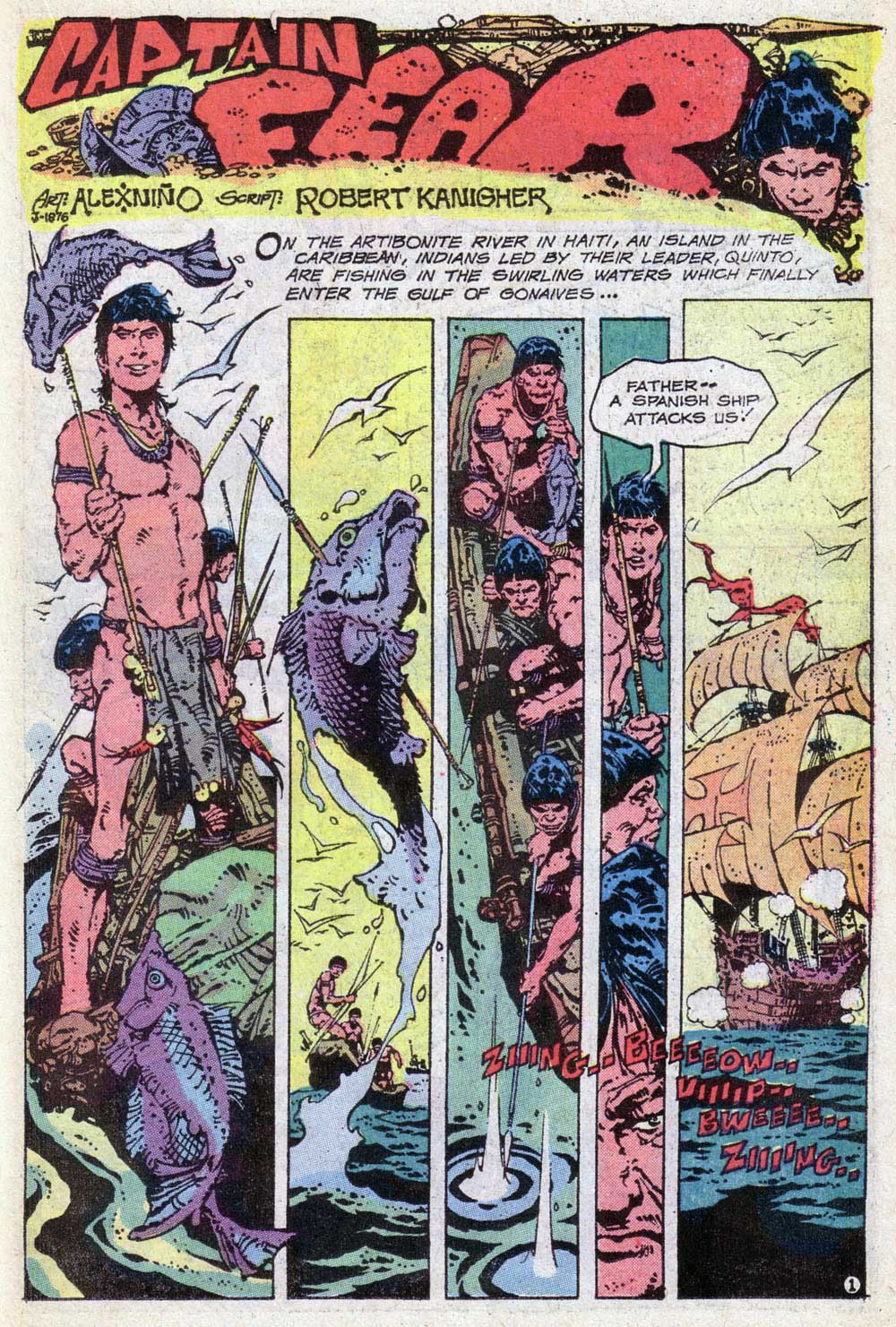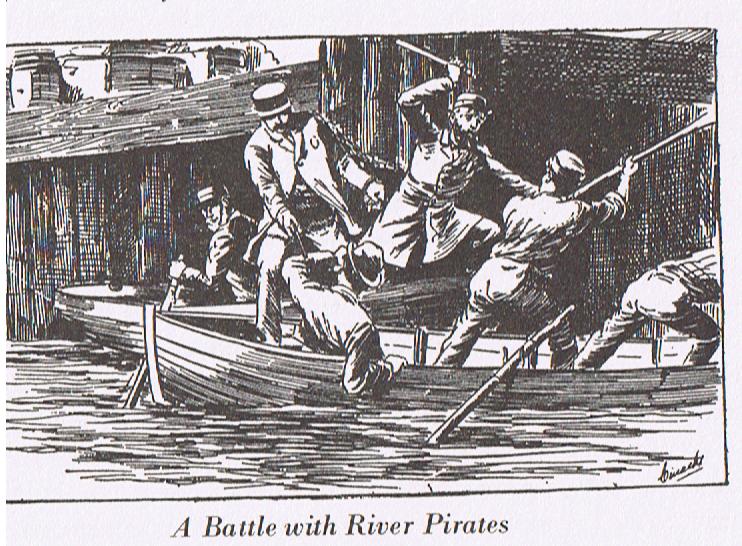Captain Fear is an obscure DC character who's first (of two) runs was as a feature in
Adventure Comics with art by Alex Niño, written by first Robert Kanigher and then Steve Skeates. Captain Fear appears in issues #425-427, 429, 432-433 for this first arc in 1973.
The titular Captain Fear is Fero, a young member of the Carib tribe from what is now Haiti. He enters the story as part of a fishing expedition that encounters a Spanish ship. The Spanish seek to capture the Caribs, who fight back. Fero's father is killed, but he gives a last admonition to his son:
The remaining tribesmen swim to land, where they are captured by the Spanish. They are taken to a mine at put to work. Under Fero's leadership, they escape, killing the sleeping Spaniards, and stealing their ship. Unfortunately, they are struck by a storm. The ship is destroyed, though Fero survives, adrift on flotsam.
He must drift a really long time, becauses he's picked up by a ship that looks like a Chinese junk, crewed by Asian pirates. Fero challenges the pirate captain and easily beats him, assuming the captaincy, with the other pirates quickly proclaiming they will "follow him to hell."
The next installment begins with Captain Fear and his men saving a young woman from sacrifice to the god Thu in the jungles of "Indochina." (The year in this installment is given as 1850, which seems unlikely, given the vibe of this story. The later run places him in the 17th Century.) After a tense escape in the jungle, Captain Fear's ship is attacked by another group of pirates. No sooner are they defeated, than the woman, Denise, threatens him at gunpoint to return her to her father--though she reveals he is not a rich plantation owner as Fear had hoped, since he wanted to ask for a ransom.
Her father is a pirate who's ship is fast approaching. In a pitch battle, Fear's ship is destroyed and he and his men are taken captive. Later, Denise has a change of heart and frees him. He fights Denise's father and kills the pirate. Now, Denise is Captain and offers Fero a position as her second in command.
Fero rejects her offer and jumps into the ocean to swim away. Denise vows revenge.
The next installment, Denise is as good as her word. Her men capture Fero when he reaches land. She has him sold into slavery. You can't keep Captain Fear down, though, because at the first oppurtunity, he stages a mutiny. Which fails--but soon after a storm strikes the ship, and it hits a reef. Fero is able to escape.
He reaches shore and is quickly captured by the Spanish. He's back in the Carribean--on his home island! Horrifyingly, he is told his tribe is now gone. They died fighting the invaders. They intend to make Fero a slave.
He is purchased by a Senora Fernandez. When he refuses her offer to be her personal bodyguard, he rebuffs her, and she calls her suitor, Captain Gomez to dispatch him. Fero bests Gomez and escapes. In the jungle, he is rescued by a group of black men who take him to a fellow Carib and friend. He finds that all of them are escaped slaves from the Hernandez plantation.
The men take the plantation, but then enacts the rest of Fero's plan. They take a ship, determined to be pirates. Captain Fero sails over the horizon, and won't appear again for 7 years, and then in the hands of a new creative team.



























